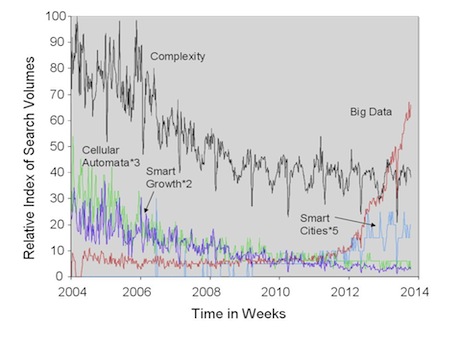The Database of Intentions
The biggest data of all comes from online searchers where there are over 2 billion searches a day, for example, on Google. This is what John Battelle has called the database of intentions for it contains a myriad of what we want for the future and what we consider important now and in the past. Suzy Moat and Tobias Preis have shown us how we can mine this data source and my editorial in the current issue of Environment and Planning B shows how we can use this to find out what is trending in our own field. Of course any crowd-sourced database that is continually being updated provides an index of what our intentions are, and the same is true of everything from the BBC News Website to Wilipedia to Facebook, Flickr and such like. A veritable cornucopia of data awaits our exploration by intelligent mining. The trick is turning this into things that are truly useful in our own field of cities, their understanding, and their planning. There are pitfalls to all of this as our colleague Jon Reades has written about in an insightful article on his blog that you can get access to here.

